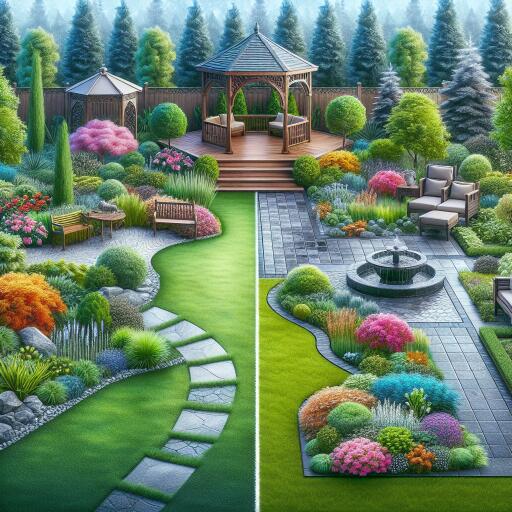
What Is Landscaping And Why Is It Important? – Green Packs
Landscaping transforms the visible aspects of land, combining gardening, terrain sculpting, and the planting of foliage to not only beautify an area but also to foster a harmonious relationship with the natural environment. This harmonization with nature underscores the importance of landscaping beyond just property aesthetics, highlighting its significant role in environmental conservation, sustainability enhancement, and overall quality of life improvement.
At its core, landscaping elevates a property’s visual appeal and curb appeal, creating inviting spaces that can raise property values. Through the infusion of lush greens, colorful blooms, and immaculate lawns, landscapes become a visual feast, significantly enhancing the beauty of spaces. Beyond aesthetics, landscaping is pivotal in creating ecologically sustainable spaces. It encourages biodiversity by integrating native plants that require less water, support local wildlife, and by adding trees and shrubs that supply shade, help lower energy costs, and boost air quality, essential steps in building a more sustainable future.
The environmental benefits of landscaping are profound. Vegetation plays a critical role in cleaning the air by absorbing harmful carbon dioxide and releasing life-giving oxygen, particularly vital in urban areas where pollution is rampant. Thoughtfully designed landscapes can curb soil erosion, manage water runoff, and naturally filter pollutants, thereby safeguarding local waterways.
The significance of landscaping extends into improving outdoor living spaces, turning them into hubs of relaxation and social activities. Integrating natural and hardscape elements, landscaping crafts spaces that invite gatherings, enhance recreational activities, and fuse beauty with functionality. Such environments not only serve as extensions of living spaces but also act as catalysts for fostering community and personal well-being.
Research underscores the positive impact of green spaces on mental health, with landscapes offering tranquil retreats that diminish stress and elevate mood. Moreover, active design elements in landscaping such as walking paths or community gardens encourage physical activity, contributing significantly to a healthier, more engaged lifestyle.
As a natural noise buffer, landscaping can mitigate urban sound pollution, making neighborhoods quieter and more serene. This aspect of landscaping is especially beneficial in dense urban areas where noise is a constant companion.
Another important facet of landscaping lies in its ability to enhance energy efficiency. Correctly positioned trees can act as shields against seasonal elements, providing natural cooling in summer and wind protection in winter, thereby reducing reliance on artificial heating and cooling systems. Moreover, innovations like green roofs and walls further contribute to insulation and temperature regulation inside buildings, leading to lowered energy consumption.
Landscaping also plays a crucial role in wildlife conservation by creating habitats that support various forms of life. A diverse landscape is vital for preserving local fauna and ensuring ecological balance, illustrating the depth at which landscaping interacts with and supports the local ecosystem.
Communities also stand to benefit from well-thought-out landscapes through the promotion of engagement and interaction in shared green spaces. Parks, gardens, and communal spaces not only serve as leisure and social hubs but also strengthen the bond between residents, fostering a sense of community and environmental stewardship.
In essence, landscaping is far more than the outward beautification of a space; it is a crucial practice for promoting environmental health, sustainability, and personal well-being. By integrating thoughtful landscaping into our lives, we stand to benefit from its myriad advantages, from enhancing biodiversity and air quality to creating vibrant, healthy communities. Landscaping thus emerges as a foundational element of sustainable living, weaving together the threads of aesthetics, ecology, and communal life into a cohesive, beneficial tapestry.





Leave a Reply